Introduction
Welcome to the fascinating world of Mojo Pittosporum! This unique and captivating plant is not only visually appealing but also holds a special place in the realm of horticulture. Hailing from the diverse Pittosporum family, Mojo Pittosporum is a true gem in the garden, and its charm is sure to pique your interest.
Originating from regions across Asia, Africa, and Australasia, Mojo Pittosporum is a versatile evergreen shrub that goes by several different names, such as “Dwarf Pittosporum” and “Tobira ‘Mojo’.” Its adaptability and resilience make it a popular choice among garden enthusiasts and landscape designers alike.
As we delve into the enchanting characteristics of this botanical wonder, you’ll discover the secrets behind its allure and learn how it can transform your garden into an inviting haven for both humans and wildlife. So, let’s embark on this exciting journey and explore the marvelous world of Mojo Pittosporum together!
Characteristics Mojo Pittosporum
Now that we’ve introduced you to the delightful Mojo Pittosporum, let’s delve into its captivating characteristics that make it a true standout in any garden or landscape. As we explore its features, you’ll quickly realize why this evergreen shrub has become such a sought-after addition to gardens around the world.
First, let’s talk about the plant’s appearance. Mojo Pittosporum is a compact, mounding shrub that typically reaches a modest height of 2-3 feet and spreads about 3-4 feet wide. Its dense foliage is adorned with petite, oval-shaped leaves that boast a glossy, dark green color with a touch of golden-yellow edging. This vibrant leaf coloration creates a striking contrast that adds visual interest to any garden space.
But the beauty of this plant doesn’t stop at its foliage. During the late spring and early summer months, Mojo Pittosporum produces small, inconspicuous flowers that exude a delightful fragrance, reminiscent of orange blossoms. While the flowers may not be showy, their sweet aroma is a pleasant surprise that adds an extra layer of appeal to this already enchanting shrub.
As the blossoms fade, they give way to small, berry-like fruits that provide a source of nourishment for various birds and other wildlife. This feature makes Mojo Pittosporum a valuable addition to any garden seeking to attract and support local fauna.
In addition to its charming appearance and wildlife-friendly attributes, Mojo Pittosporum is also known for its hardy nature. This tough little shrub is capable of withstanding various environmental conditions, making it a reliable choice for gardeners and landscapers alike.
So, with its eye-catching foliage, fragrant flowers, and resilient disposition, Mojo Pittosporum proves to be a versatile and enchanting addition to any garden or landscape.
Cultivation Mojo Pittosporum
Now that we’ve explored the charming characteristics of Mojo Pittosporum, let’s discuss how to cultivate this delightful shrub and ensure it thrives in your garden or landscape. With a few essential tips and tricks, you’ll be well on your way to creating a verdant haven that showcases the captivating beauty of this remarkable plant.
To begin with, let’s talk about the soil. Mojo Pittosporum is quite adaptable when it comes to soil types, but it does prefer well-draining soil with a slightly acidic to neutral pH. By providing these conditions, you’ll create a nurturing environment that allows the plant to flourish.
Next up is light. While Mojo Pittosporum can tolerate a range of light conditions, it thrives best in partial to full sun. By ensuring your plant receives ample sunlight, you’ll be rewarded with vibrant foliage and healthy growth.
When it comes to watering, moderation is key. Mojo Pittosporum appreciates consistent moisture, but it’s crucial not to overwater, as this can lead to root rot. A good rule of thumb is to water deeply and allow the soil to dry slightly between waterings. This approach will help maintain the perfect balance of moisture for your plant.
Fertilization is another important aspect of cultivating a thriving Mojo Pittosporum. To encourage robust growth and vibrant foliage, apply a slow-release, balanced fertilizer in the spring and fall. This will provide the plant with essential nutrients and promote overall health.
Lastly, let’s touch on pruning. While Mojo Pittosporum naturally maintains a compact, mounding shape, occasional pruning may be necessary to maintain its desired form or remove any dead or damaged branches. The best time to prune is in late winter or early spring, before the onset of new growth.
By following these cultivation guidelines, you’ll be well-equipped to nurture a thriving Mojo Pittosporum that brings beauty and charm to your garden or landscape for years to come.
Propagation
So, you’ve fallen in love with the enchanting Mojo Pittosporum and want to add more of these delightful shrubs to your garden or landscape? You’re in luck! Propagating Mojo Pittosporum is a rewarding endeavor that allows you to expand your collection and share this captivating plant with others. Let’s explore the various methods of propagation, so you can choose the one that suits you best.
Firstly, we have seed propagation. While this method requires patience, it’s a fascinating way to observe the entire life cycle of Mojo Pittosporum. To begin, collect ripe fruits from the plant and remove the seeds. Clean them thoroughly and sow them in a well-draining, moist seed mix. Be sure to provide warmth and ample light, as these conditions will encourage germination. Keep in mind that seed propagation can be a slow process, so patience is essential.
Another popular method of propagation is through cuttings. This technique allows you to create an exact clone of the parent plant, ensuring the same captivating characteristics you’ve come to adore. To propagate by cuttings, select a healthy, semi-hardwood stem from the parent plant during the late summer or early fall. Trim the cutting to about 4-6 inches in length, remove the lower leaves, and dip the cut end in rooting hormone. Plant the cutting in a well-draining potting mix and keep it moist until roots develop. Once the cutting has established a robust root system, it’s time to transplant it into your garden or landscape.
Lastly, there’s the option of grafting. This advanced propagation technique involves joining a piece of Mojo Pittosporum (the scion) to the rootstock of another compatible plant. While grafting requires skill and expertise, it can be an effective way to propagate Mojo Pittosporum, especially if you’re looking to create a unique combination of plants in your garden.
By exploring these various propagation methods, you’ll be well on your way to expanding your collection of Mojo Pittosporum and enhancing the beauty of your garden or landscape with this enchanting, versatile shrub.
Landscape Uses
As we continue our journey with the captivating Mojo Pittosporum, let’s delve into the myriad of ways this versatile shrub can be incorporated into your garden or landscape. With its enchanting features and hardy nature, Mojo Pittosporum offers a multitude of landscape uses that can elevate the aesthetic appeal of your outdoor space.
One fantastic way to showcase Mojo Pittosporum is as a foundation planting. Its compact size and mounding shape make it an excellent choice for planting along the base of your home or other structures. The vibrant foliage creates a striking contrast against building materials, adding depth and visual interest to your landscape.
Mojo Pittosporum also shines as a border plant. Its dense foliage and compact growth habit create a natural, low-maintenance border that defines garden beds or walkways. The shrub’s eye-catching leaf coloration adds a touch of elegance, while its fragrant flowers provide a delightful sensory experience for those who pass by.
If you’re looking to create a wildlife-friendly garden, Mojo Pittosporum is a perfect addition. The small, inconspicuous flowers attract pollinators, while the berry-like fruits provide a food source for birds and other fauna. By incorporating this enchanting shrub into your landscape, you’ll be supporting local biodiversity and creating a haven for various species.
In addition to these landscape uses, Mojo Pittosporum can also be utilized as a container plant. Its compact size and adaptability make it a great choice for adding greenery and visual interest to patios, balconies, or other outdoor living spaces. Just be sure to provide adequate drainage and proper care to ensure your potted Mojo Pittosporum thrives.
Lastly, let’s not forget about companion plants. Mojo Pittosporum can be paired with a variety of other plants to create stunning garden compositions. Consider combining it with contrasting foliage, such as ornamental grasses or plants with silver or burgundy leaves, to create a visually striking display.
With so many landscape uses, it’s no wonder Mojo Pittosporum has become a beloved addition to gardens and landscapes around the world. By incorporating this enchanting shrub into your outdoor space, you’ll be adding beauty, charm, and versatility that will be admired for years to come.
Pests and Diseases
As we’ve discovered, the enchanting Mojo Pittosporum is a versatile and hardy shrub that brings beauty and charm to any garden or landscape. However, even the most resilient plants can occasionally encounter pests and diseases. By being aware of potential issues and taking proactive measures, you can ensure your Mojo Pittosporum remains healthy and vibrant.
When it comes to pests, there are a few critters that may find Mojo Pittosporum particularly enticing. Aphids, for example, are tiny insects that can be found on the undersides of leaves, where they feed on plant sap. If you notice curling or yellowing leaves, it might be a sign of an aphid infestation. A simple solution is to blast them off with water or introduce beneficial insects, such as ladybugs, which are natural predators of aphids.
Scale insects are another potential pest that may target Mojo Pittosporum. These small, shield-shaped insects can be found on stems and leaves, where they feed on plant sap and excrete a sticky substance called honeydew. This substance can lead to the growth of sooty mold, which can be unsightly and impact the plant’s overall health.
To combat scale insects, try using horticultural oil or insecticidal soap, and be sure to remove any affected plant material to prevent further infestation.
As for diseases, root rot can be a concern if Mojo Pittosporum is subjected to overly wet conditions. To prevent this issue, ensure your plant is situated in well-draining soil and avoid overwatering. By maintaining the proper moisture balance, you’ll create an environment that supports healthy root development and prevents the onset of root rot.
Another potential disease is Pittosporum dieback, which is caused by a fungus. This condition can lead to yellowing leaves, branch dieback, and, in severe cases, the death of the plant. To prevent this disease, ensure proper air circulation around your Mojo Pittosporum and avoid overhead watering, as wet foliage can create an environment conducive to fungal growth.
By being vigilant and addressing any pest or disease issues promptly, you can keep your Mojo Pittosporum healthy and thriving, allowing it to continue gracing your garden or landscape with its captivating beauty.
Conclusion
In conclusion, the alluring Mojo Pittosporum is a true gem in the world of gardening and landscaping. Its enchanting features, hardy nature, and versatility make it a prized addition to any outdoor space.
By understanding its cultivation requirements, propagation techniques, landscape uses, and potential pests and diseases, you’ll be well-equipped to nurture and appreciate this remarkable shrub.
As you embark on your journey with Mojo Pittosporum, remember to take a moment to enjoy the sensory delights it offers. From its vibrant foliage to its delicate fragrance, this captivating plant is sure to bring joy and inspiration to your garden or landscape for years to come.
So, go ahead and introduce this charming shrub to your outdoor space, and watch as it weaves its magic, transforming your garden into a haven of beauty, serenity, and wonder. Happy gardening!

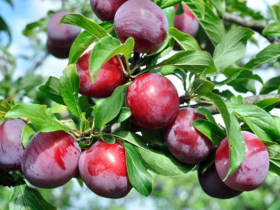


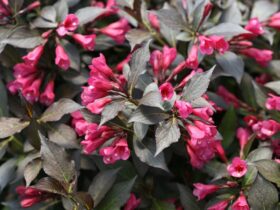
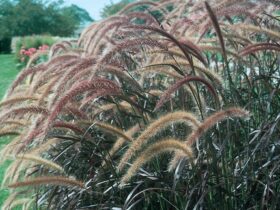
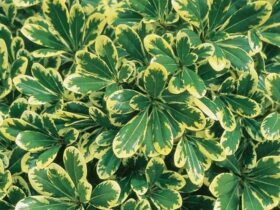

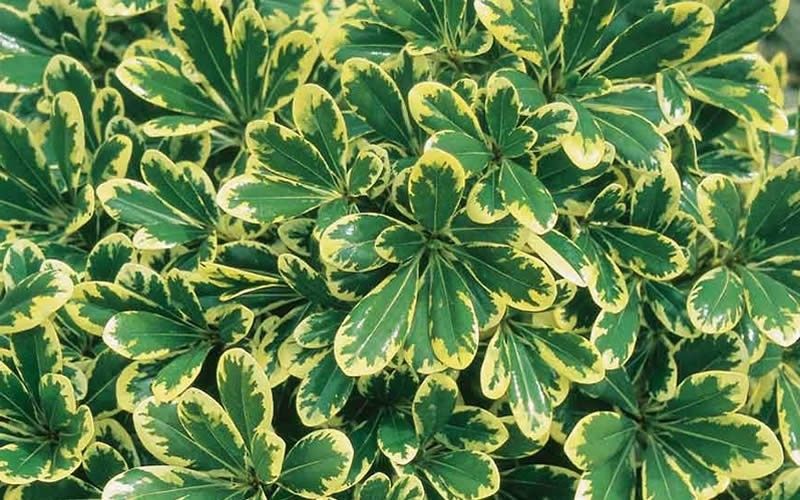



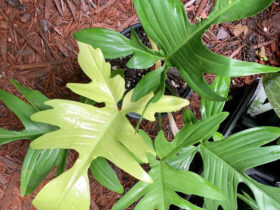
Leave a Reply